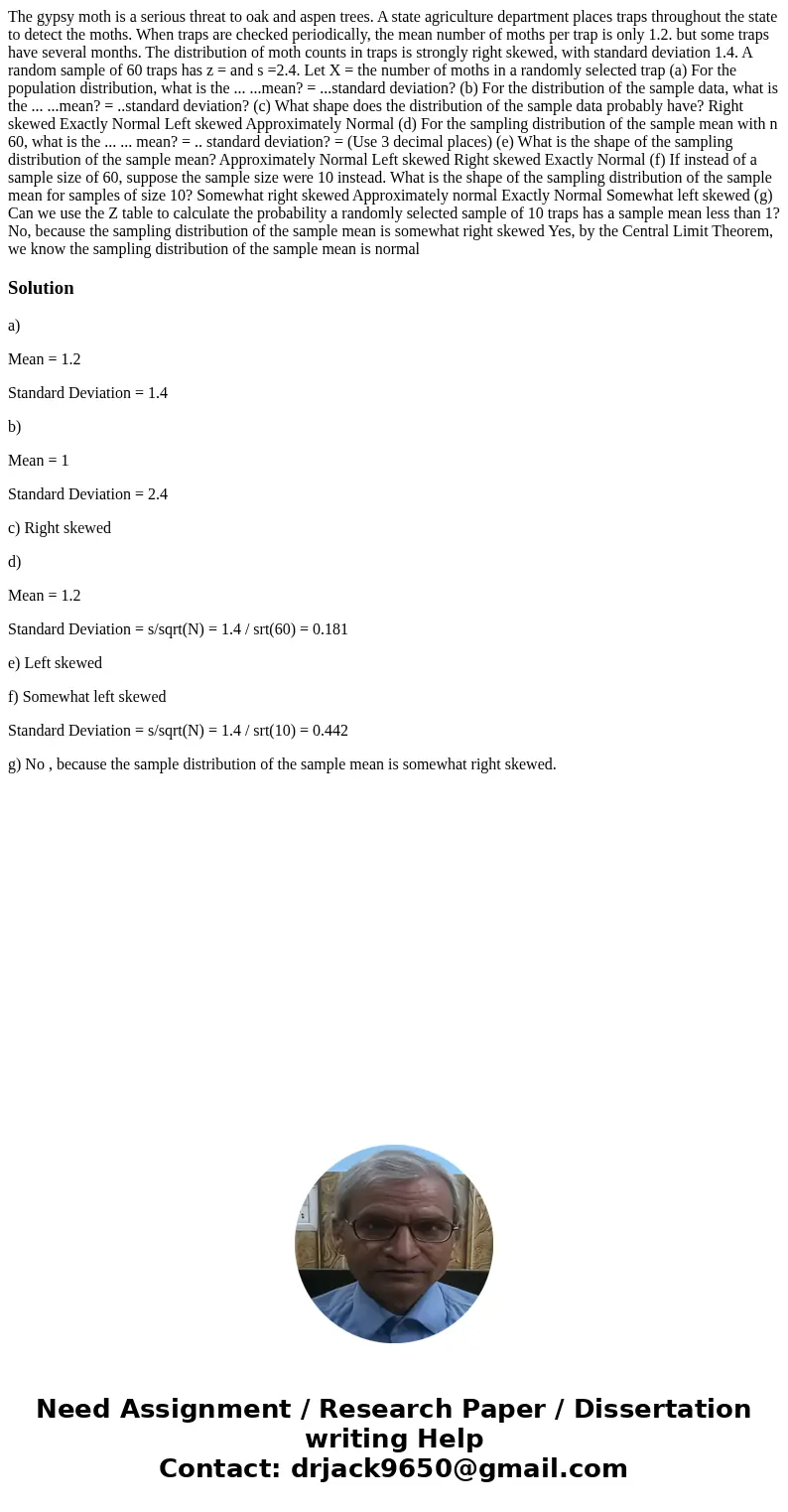The gypsy moth is a serious threat to oak and aspen trees A
The gypsy moth is a serious threat to oak and aspen trees. A state agriculture department places traps throughout the state to detect the moths. When traps are checked periodically, the mean number of moths per trap is only 1.2. but some traps have several months. The distribution of moth counts in traps is strongly right skewed, with standard deviation 1.4. A random sample of 60 traps has z = and s =2.4. Let X = the number of moths in a randomly selected trap (a) For the population distribution, what is the ... ...mean? = ...standard deviation? (b) For the distribution of the sample data, what is the ... ...mean? = ..standard deviation? (c) What shape does the distribution of the sample data probably have? Right skewed Exactly Normal Left skewed Approximately Normal (d) For the sampling distribution of the sample mean with n 60, what is the ... ... mean? = .. standard deviation? = (Use 3 decimal places) (e) What is the shape of the sampling distribution of the sample mean? Approximately Normal Left skewed Right skewed Exactly Normal (f) If instead of a sample size of 60, suppose the sample size were 10 instead. What is the shape of the sampling distribution of the sample mean for samples of size 10? Somewhat right skewed Approximately normal Exactly Normal Somewhat left skewed (g) Can we use the Z table to calculate the probability a randomly selected sample of 10 traps has a sample mean less than 1? No, because the sampling distribution of the sample mean is somewhat right skewed Yes, by the Central Limit Theorem, we know the sampling distribution of the sample mean is normal 
Solution
a)
Mean = 1.2
Standard Deviation = 1.4
b)
Mean = 1
Standard Deviation = 2.4
c) Right skewed
d)
Mean = 1.2
Standard Deviation = s/sqrt(N) = 1.4 / srt(60) = 0.181
e) Left skewed
f) Somewhat left skewed
Standard Deviation = s/sqrt(N) = 1.4 / srt(10) = 0.442
g) No , because the sample distribution of the sample mean is somewhat right skewed.

 Homework Sourse
Homework Sourse